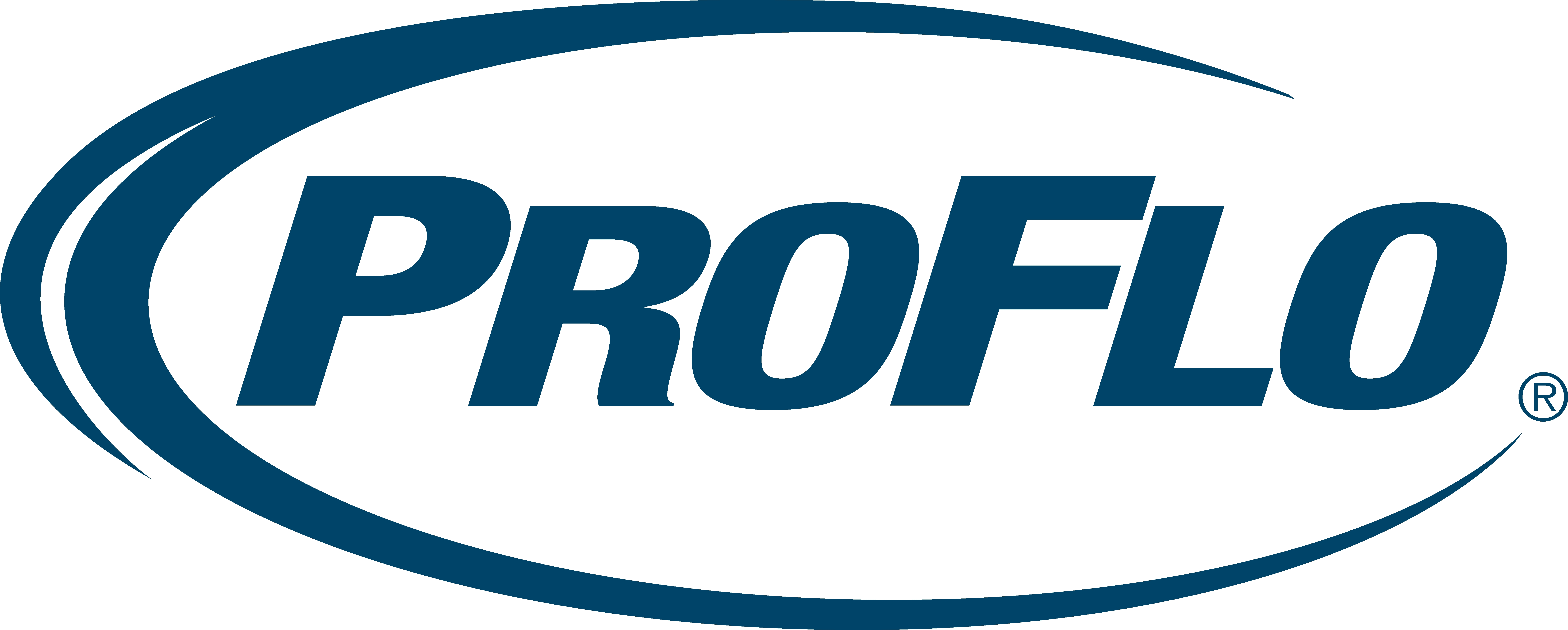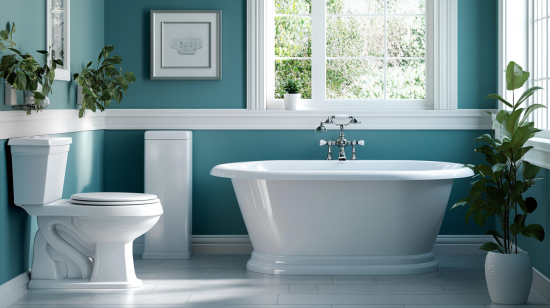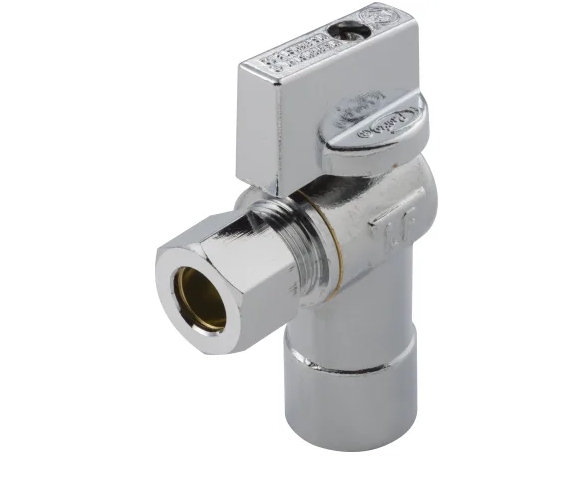
PROFLO 1/2″ x 3/8″ Quarter Turn Angle Valve
- Constructed of brass ensuring durability and dependability
- Covered under ProFlo’s 1 year limited warranty
- High quality finish – will resist rust and corrosion through everyday use
- Connection Size: 1/2″ x 3/8″
- Connection Type: Sweat x Compression
$9.75
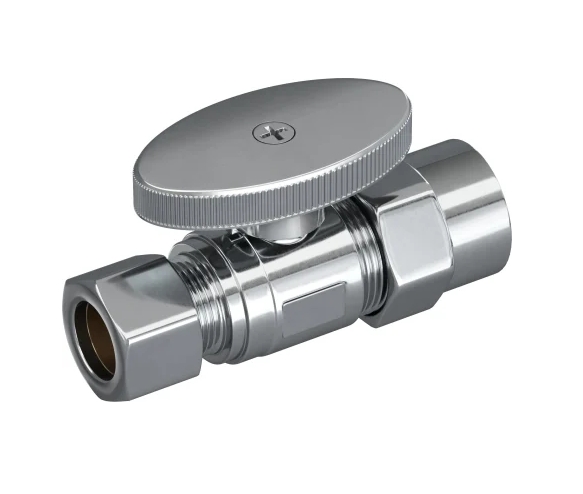
PROFLO 1/2″ x 3/8″ Quarter Turn Straight Valve
- Constructed of brass ensuring durability and dependability
- Covered under ProFlo’s 1 year limited warranty
- High quality finish – will resist rust and corrosion through everyday use
- Connection Size: 1/2″ x 3/8″
- Connection Type: CPVC x Compression
$11.62
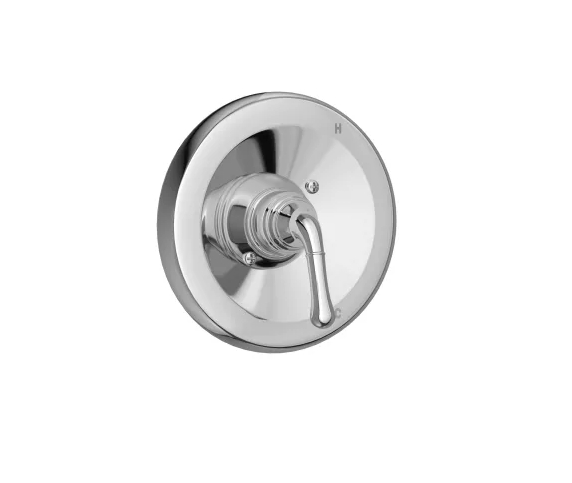
PROFLO Pressure Balanced Valve Trim Only
- All Proflo products are factory tested before disbursement – 100% guaranteed to function flawlessly
- Fully covered under Proflo’s limited lifetime faucet warranty in residential applications
- Shower valve trim kit – metal lever handle
- For use with pressure balancing valve cartridge (PF3001)
- ADA compliant
- Valve Trim Diameter: 6-3/4″
$39.31
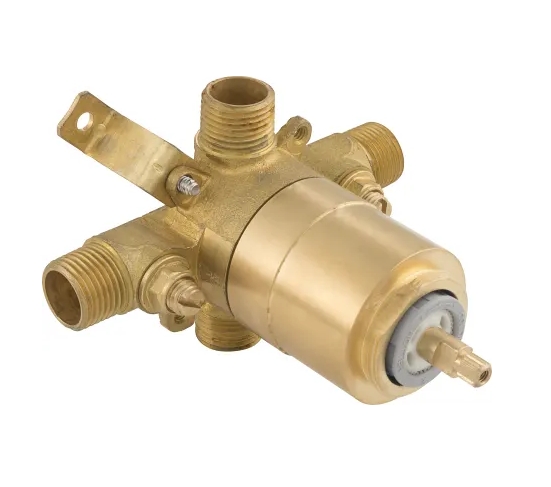
PROFLO 4001 Series Pressure Balanced Tub and Shower Faucet Valve with Stops 1/2″ MIP and SWT
- Pressure balance valve with integral stops
- One-piece cartridge design for ease of maintenance
- Ceramic disc valve cartridge
- Back-to-back capability
- Cast bronze valve body
- Optional air test cap available
- Adjustable temperature limit stop
- IAPMO approved
- Quick remove plaster guard
- Easy mounting brackets
- Meets or exceeds ASSE 1016-P standards
Finding the Perfect Proflo Valve for Your Needs
If you’re in the market for a new Proflo valve, you’ve come to the right place! As an avid home improvement DIYer and plumbing enthusiast, I’ve installed my fair share of Proflo valves over the years. From whole house water filters to swimming pool systems, these versatile valves can be used in a variety of applications. In this comprehensive buying guide, I’ll walk you through everything you need to know to pick the perfect Proflo valve for your next project.
What is a Proflo Valve?
First things first – what exactly is a Proflo valve? Proflo valves are heavy-duty plastic multiport valves used to regulate the flow of water in residential, commercial, and industrial settings. Made from durable PVC or CPVC, they come in a range of sizes and configurations. Proflo is one of the most trusted brands when it comes to reliable valves for managing water flow.
Proflo offers ball valves, diverter valves, check valves, butterfly valves and more. Within each valve type, there are different models to suit various flow control needs. When properly installed, Proflo valves provide years of smooth, trouble-free performance.
Key Applications for Proflo Valves
Proflo valves can be found in all kinds of systems where managing water flow is crucial:
- Whole house water filtration – Used to direct water through filtration media tanks. Multiport valves allow you to easily switch between filtered and unfiltered water.
- Pool and spa systems – Diverter and check valves direct water through pumps, filters, heaters, etc. Butterfly valves allow you to control flow rate.
- Irrigation systems – Zone valves open and close to allow water to flow through specific irrigation zones.
- Plumbing systems – Ball valves conveniently turn water on and off to fixtures, appliances, etc.
- Industrial process piping – Reliable control of water, chemicals, and other liquids.
As you can see, Proflo valves have broad functionality making them useful for residential, commercial, municipal, and industrial applications.
Benefits of Proflo Valves
There are many good reasons Proflo valves are trusted worldwide:
- Durability – Glass reinforced thermoplastics allow them to withstand high pressures and temperatures.
- Corrosion resistance – PVC and CPVC materials won’t corrode over time like metal valves.
- Ease of use – Features like hand levers make them simple to operate.
- Cost-effective – Quality valves at an affordable price point.
- Low maintenance – Don’t require lubrication or regular upkeep.
- Versatility – Available in wide range of sizes, materials, connection types and configurations.
When you choose Proflo, you get great performance and reliability. Let’s go over the key steps for choosing the perfect valve for your application.
How to Choose the Right Proflo Valve
With so many types and models available, selecting the ideal Proflo valve requires some due diligence. Follow this handy guide to find the right valve for your needs:
Step 1: Determine the Valve Application
What will the valve be used for? Consider factors like:
- Type of liquid – water, chemicals, oil, etc.
- Pipe size
- Maximum flow rate
- Maximum pressure
- Operating temperature range
- Valve function – on/off control, diverting flow, preventing backflow, etc.
This helps narrow down valve options suitable for your application.
Step 2: Select the Valve Type
Proflo valves come in 5 main designs:
- Ball valves – For quick on/off control of flow. Available in true union and standard models.
- Diverter valves – Allow flow switching between two or more ports. Include piston, rotor and disc models.
- Check valves – Prevent reverse flow. Spring loaded and swing check designs.
- Butterfly valves – Control flow rate and volume. Operated by hand levers or actuated.
- Specialty valves – Unique valves like pressure relief and foot valves.
Consider which valve type aligns with your flow control needs. This narrows the field down further.
Step 3: Determine the Right Size
Valve size is based on the pipe size it will connect to. Common sizes include:
- 3/4″, 1″, 1 1/4″, 1 1/2″, 2″, 3″, 4″ and larger
Measure your pipe outer diameter or inner diameter to identify the appropriate valve size. Pipe material is also a factor – PVC, copper, CPVC, etc.
Step 4: Select Valve Material
Proflo valves come in:
- PVC – For cold to moderate temperature water. Most common and cost effective.
- CPVC – For hot water applications up to 180°F. More heat resistant than PVC.
- PVDF – For corrosive chemicals and high temps to 280°F. Most durable material.
Match the material to your medium and temperature requirements.
Step 5: Choose Connections
Proflo offers various connection styles:
- Threaded – External or internal threads to connect to male or female threaded pipes.
- Union – Nut and sleeve allow easy valve removal without disassembling piping.
- Solvent weld – For solvent cementing to PVC and CPVC piping.
- Flanged – Bolted flange connections for high pressure applications.
Select the end connections to properly interface with your existing plumbing. Union and flange styles support easy maintenance.
Step 6: Confirm Pressure Rating
Make sure the valve pressure rating exceeds the system pressure. Pressure ratings available:
- PVC: 150 psi non-shock, 100 psi shock
- CPVC: 150 psi non-shock, 100 psi shock
- PVDF: 150 psi non-shock, 100 psi shock
Higher pressure ratings are available for some models if needed.
By following this step-by-step process, you can zero in on the ideal Proflo valve for the job. Now let’s go over key installation tips.
How to Install a Proflo Valve
Properly installing your Proflo valve ensures optimal performance. Here are some best practices:
Gather the Right Tools
- Wrenches for tightening unions and flanges
- PVC primer & solvent cement
- Teflon tape for sealing threaded connections
- Emery cloth to clean and rough up surfaces for gluing
Pick a Suitable Location
- Accessible for operation and maintenance
- Minimize bends and elbows in piping leading to the valve
- Allow room for service and repairs
Prepare End Connections
- For slip connections, remove burrs and rough up surfaces with emery paper
- Clean and prime ends thoroughly before cementing
- Use Teflon tape on threaded female connections
Assemble the Valve
- For flanged models, ensure flange gasket is in place
- Alternately tighten flange bolts to evenly seat gasket
- Attach unions by hand tightening before final wrench tightening
Mount the Valve
- For best support, attach valve directly to framing with pipe hangers
- Verify valve is aligned straight with piping when tightening
- Use strap wrench to avoid damaging PVC/CPVC if necessary
Test for Leaks!
- Slowly pressurize system and spay valve and connections with water/soap solution
- Fix any leaks detected immediately before proceeding
And that’s it! Be sure to follow manufacturer instructions and your Proflo valve will deliver years of trouble-free performance. Now let’s go over some key maintenance tips.
Maintaining and Repairing Proflo Valves
Like most equipment, Proflo valves need occasional maintenance and repair to keep performing their best. Here’s how to keep them in top shape:
Regular Maintenance
Carrying out simple maintenance helps prevent problems down the road:
- Exercising the valve – Open and close the valve several times a year to ensure smooth operation.
- Checking for leaks – Periodically inspect for drippy seals which indicate worn seats or stem packings.
- Testing backflow prevention – For check valves, test reverse flow prevention annually.
- Cleaning debris – Use water/air to flush out any collected dirt or mineral deposits.
- Checking bolts – Re-tighten flange bolts if necessary to ensure solid sealing.
A little preventative maintenance goes a long way for the longevity of your Proflo valve.
Repairing a Leaking Proflo Valve
Most leaks stemming from a Proflo valve are relatively easy fixes:
- Stem packing – If the leak is coming from around the stem, simply tighten the packing nut or replace the stem O-rings.
- Body seals – Leaks between sections indicate worn body O-rings which must be replaced.
- Seat leak – Tricky to diagnose, but leaking through the seat reveals worn seats needing replacement.
- Cracked parts – Any external leakage could mean a crack in the valve body. The valve must be replaced.
Thankfully Proflo valves are designed for easy servicing of common wear points. Just take your time diagnosing the leak and replace the worn components.
Replacing a Proflo Valve
After extended use, if your Proflo valve can’t be fixed, replacing it is straightforward:
- Shut off water – Turn off upstream isolation valves and open downstream fixtures to depressurize.
- Drain the valve – Open drain ports or remove piping below the valve to drain out residual water.
- Disconnect piping – Undo flanges or unions at valve inlet and outlet and detach from piping.
- Remove valve – Unscrew housing bolts and disassemble to remove the valve.
- Install new valve – Follow the installation steps above to replace with the new Proflo valve.
Take proper safety precautions when handling pressurized piping. With good maintenance habits, you’ll maximize the working life of your Proflo valves.
Where to Buy Proflo Valves
Now that you’re an expert on all things Proflo, where’s the best place to purchase Proflo valves and replacement parts? Here are my top recommendations:
- Amazon – Offers a huge selection of Proflo valves and components with fast shipping. Easy to compare models.
- Home Depot – Also a major supplier of Proflo valves in stores and online.
- Ferguson – Industrial supply house with knowledgeable staff and every Proflo model available.
- Grainger – Reliable for commercial and industrial Proflo valve needs.
- Pure Water Products – Specializing in water filtration, great source for whole house Proflo valves.
- Leslie’s Pool Supplies – For all swimming pool Proflo diverter and check valves.
- Sprinkler Warehouse – Wide selection of Proflo valves for irrigation systems.
Shop around to find the best prices and exactly the right valves for your plumbing project. Most suppliers also stock genuine Proflo replacement parts to service existing valves. And there you have it – everything you need to know to build that dream plumbing system with quality Proflo valves! Let me know if you have any other Proflo valve questions.
